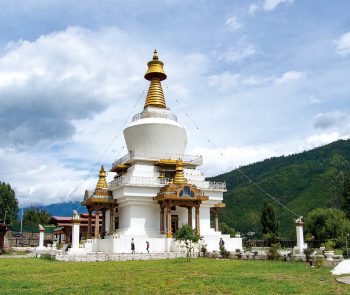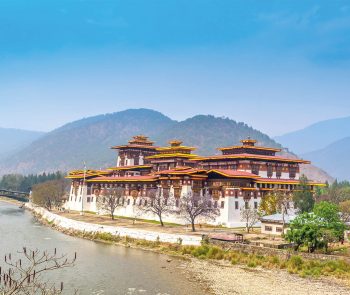Bhutan
Bhutan, a Buddhist kingdom on the Himalayas’ eastern edge, is known for its monasteries, fortresses (or dzongs) and dramatic landscapes that range from subtropical plains to steep mountains and valleys.
In the High Himalayas, peaks such as 7,326m Jomolhari are popular trekking destinations. Paro Taktsang monastery (also known as Tiger’s Nest) clings to cliffs above the forested Paro Valley.
Economists all over the world have argued that the key to happiness is obtaining and enjoying material development. Bhutan however, adheres to a very different belief and advocates that amassing material wealth does not necessarily lead to happiness. Bhutan is now trying to measure progress not by the popular idea of Gross Domestic Product but through Gross National Happiness. While conventional development models stressed on economic growth as the ultimate objective, the concept of Gross National Happiness is based on the premise that true development of human society takes place when material and spiritual development occur side by side to complement and reinforce each other.
The Kingdom of Bhutan is a small landlocked country located in the southern foothills of the Himalayan mountain range, sandwiched between the People’s Republic of China in the north and the Republic of India in the south.
It is a sovereign nation, with a total land area of 38,394 km² and a total population of 735553 (2017).




